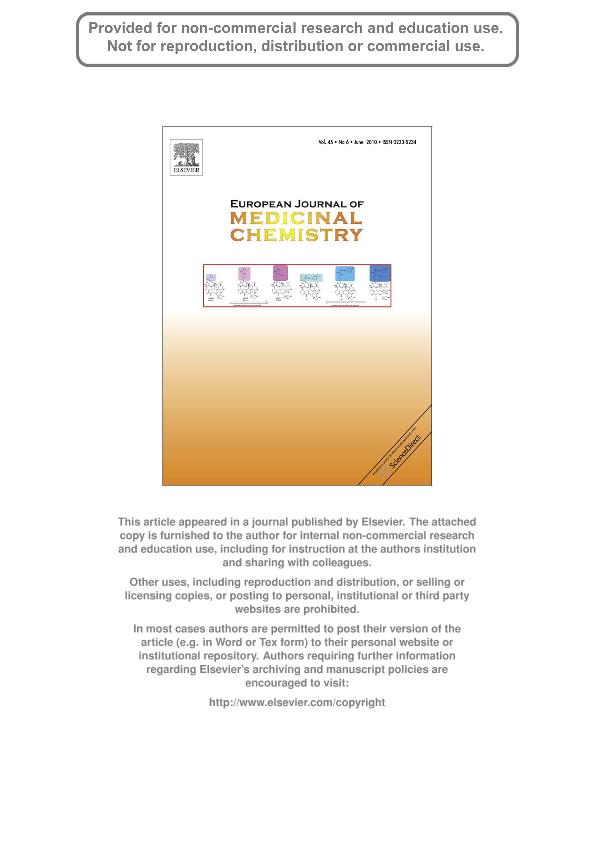Artículo
Naftifine-analogues as anti-Trypanosoma cruzi agents
Gerpe, Alejandra; Boiani Santurio, Lucia ; Hernández, Paola; Sortino, Maximiliano Andrés
; Hernández, Paola; Sortino, Maximiliano Andrés ; Zacchino, Susana; González, Mercedes; Cerecetto, Hugo
; Zacchino, Susana; González, Mercedes; Cerecetto, Hugo
 ; Hernández, Paola; Sortino, Maximiliano Andrés
; Hernández, Paola; Sortino, Maximiliano Andrés ; Zacchino, Susana; González, Mercedes; Cerecetto, Hugo
; Zacchino, Susana; González, Mercedes; Cerecetto, Hugo
Fecha de publicación:
06/2010
Editorial:
Elsevier Masson
Revista:
European Journal of Medical Chemistry
ISSN:
0223-5234
Idioma:
Inglés
Tipo de recurso:
Artículo publicado
Clasificación temática:
Resumen
Chagas disease represents a relevant health problem in Central and South America. The first line of treatment is Nifurtimox and Benznidazole which have a great deal of disadvantages that demands the rapid generation of therapeutic alternatives. Based in our research on aza-thiaheterocycles as anti-Trypanosoma cruzi agents we identified pharmacophores that act through oxidative stress. Here, we describe the synthesis and the activity of new containing bioactive-heterocycles analogues of naftifine as potential T. cruzi membrane sterol biosynthesis inhibitors. Benzimidazole 1,3-dioxides (11 and 13) and quinoxaline 1,4-dioxides (22 and 23) displayed excellent parasite/mammal selectivity indexes. Analysis of the free sterols from parasite incubated with the compounds showed that any of them are able to accumulate squalene suggesting that in the anti-T. cruzi mechanism of action is not involved the inhibition of sterol biosynthesis. Some derivatives were also tested as antifungal agents. The results obtained in the present work open potential therapeutic possibilities of new compounds for these infectious diseases.
Archivos asociados
Licencia
Identificadores
Colecciones
Articulos(IMIBIO-SL)
Articulos de INST. MULTIDICIPLINARIO DE INV. BIO. DE SAN LUIS
Articulos de INST. MULTIDICIPLINARIO DE INV. BIO. DE SAN LUIS
Citación
Gerpe, Alejandra; Boiani Santurio, Lucia; Hernández, Paola; Sortino, Maximiliano Andrés; Zacchino, Susana; et al.; Naftifine-analogues as anti-Trypanosoma cruzi agents; Elsevier Masson; European Journal of Medical Chemistry; 45; 6; 6-2010; 2154-2164
Compartir
Altmétricas



